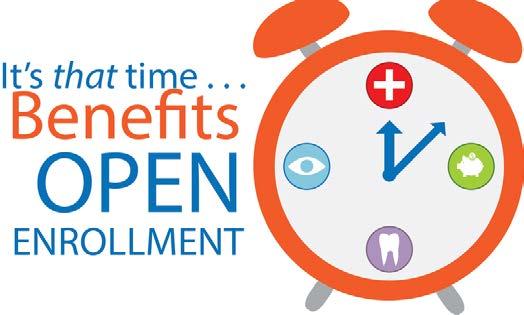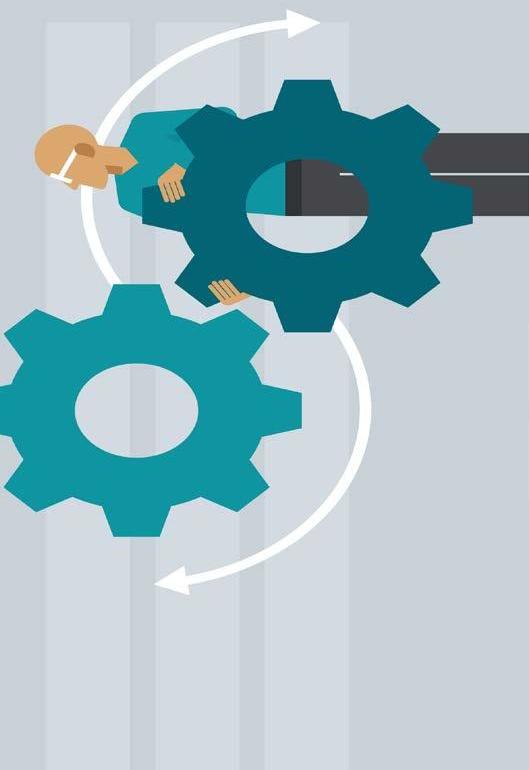
7 minute read
Young Women
This July, two teenage girls from every state in the country met in Washington, D.C., for the 73rd annual American Legion Auxiliary Girls Nation. This oneweek government-in-action leadership development program is designed to educate future leaders on U.S. government fundamentals and the rights, privileges and responsibilities of citizens.
The girls selected to go to ALA Girls Nation are chosen from week-long ALA Girls State programs in each state. The young women become “senators” for a week and participate in mock political campaigns and debates, visit historical sites, and meet their real-life counterparts on Capitol Hill. For a number of the participants, the program’s impact extends beyond the weeklong event: Many go on to serve in the military and credit ALA Girls Nation as their source of inspiration.
New ALA member and U.S. Army Capt. Virginia Clark, stationed at Fort Benning in Georgia, is an ALA Girls Nation alumna. Though she says she has always been patriotic, her experiences at ALA Girls State and ALA Girls Nation helped her realize she
wanted to serve her country. “Being around really motivated people made me realize I wanted to be around people who were spending their time doing things rather than looking for the next great party,” Clark said.
Reflecting on where she has been and where she is going, Clark says she owes it all to the American Legion Auxiliary. “I wouldn’t have gotten into West Point without ALA Girls State and ALA Girls Nation ... I 100 percent owe, I think, my current life and my career - I met my husband at West Point - to the fact that I went to ALA Girls State and ALA Girls Nation.”
For some girls, the Washington, D.C., leadership program is their first opportunity to connect with peers with common interests. For others, it is the first time they encounter students whose perspective differs from their own. For all, it is a moment in time where similarities and differences come together to symbolize strength, democracy and freedom.
Former ALA Girls State and ALA Girls Nation attendee Allyson Snelling, who is attending the U.S.
Military Academy at West Point, chose a career in the military because she “loves everything it represents.” She adds, “The values and lessons I’ve learned during my short time at West Point have made me a better person and leader.” Snelling said the program taught her the power of one voice and the importance of communicating with others. “Being able to communicate with someone you may completely disagree with is becoming a lost art,” she said. “ALA Girls Nation taught me that it doesn’t matter if you agree; it matters that you understand.”
ALA Girls Nation alumnae have gone on to hold leadership roles in industries spanning government, media, education and law, and many have become high-ranking members of the military.
Notable alumnae include Jane Pauley, national media personality; Susan Bysiewicz, lieutenant governor of Connecticut; retired Lt. Gen. Michelle D. Johnson, former superintendent of the U.S. Air Force Academy and former Air Force aide to the President; Ann Richards, former governor of Texas; and Susan Porter-Rose, former chief of staff to First Lady Barbara Bush, among many others. ALA Girls Nation is proud to be a foundation of support to the future strong women of this great nation.
The American Legion Auxiliary (ALA) is a nonpartisan organization committed to advocating for veterans’ issues, mentoring America’s youth and promoting patriotism. They advance the mission of The American Legion, incorporated by Congress in 1919 as a patriotic veterans organization founded on four pillars: Veterans Affairs & Rehabilitation, National Security, Americanism and Children & Youth.—
2020 ACA Enrollment November 1-December 7 Healthcare.gov

Did you know that 78 percent of people with a financial plan pay their bills on time vs. only 38 percent of people who don’t have a plan? Or that 68 percent of planners have an emergency fund while only 26 percent of non-planners are prepared to cover an unexpected cost? Stats like these from the 2019 Schwab Modern Wealth survey reinforce my belief that everyone - no matter their financial situation - can benefit from a financial plan.
So why aren’t more people planners? Often it’s because either they don’t think they have enough money or they think a financial plan costs too much. But neither is the case. In fact, you can map out your own financial plan, and it won’t cost you a penny. Here’s how to get started with a DIY plan.
* Write down your goals - Start by asking yourself what you want your money to accomplish. What are your short-term needs? What do you want to accomplish in the next 5 to 10 years? What are you saving for long term? Get specific and write everything down.
* Create a net worth statement - Achieving your goals requires understanding where you stand today. So start by listing your assets - bank and investment accounts, real estate and valuable personal property. Now list all your debts: mortgage, credit cards, student loans - everything. Subtract your liabilities from your assets and you have your net worth. If you’re in the plus, great. If you’re in the minus, that’s not uncommon, but it points out that you have some work to do. Use this number as a benchmark to measure your progress.
* Review your cash flow - Cash flow simply means money in (your income) and money out (your expenses). How much money do you earn each month? Be sure to include all sources of income. Now look at your expenses, including any that may only come up once or twice a year.
* Zero in on your budget - Your cash-flow analysis will let you know how much you’re spending. Focusing on your budget will let you know where that money is going. Write down your essential expenses such as mortgage, insurance, food, transportation, utilities and loan payments. Don’t forget periodic payments and be sure to include savings. Then write down nonessentials - restaurants, entertainment, 10 steps to a DIY Financial plan By Carrie Schwab-Pomerantz

even clothes.
* Focus on debt management - Debt can derail you, but not all debt is bad. It’s high-interest consumer debt like credit cards that you want to avoid. Try to follow the 28/36 guideline that no more than 28 percent of pre-tax income goes toward home debt, no more than 36 percent toward all debt. Look at each item to decide when and how you’ll pay it down.
* Get your retirement savings on track - Whatever your age, retirement saving needs to be part of your financial plan. Calculate how much you will need to comfortably retire and contribute to a 401(k) or other employer-sponsored plan or an IRA. The earlier you start, the less you’ll have to save each year.
* Check in with your portfolio - If you’re an investor, understand that market ups and downs can impact the relative percentage of stocks and bonds you own - even when you do nothing. So review and rebalance on at least an annual basis. (And if you’re not an investor, think carefully about becoming one - the sooner the better.)
* Review your insurance - Insurance is an important part of protecting your finances. Health insurance is a given, and most of us also need car and homeowner’s or renter’s insurance. While you’re working, disability insurance is a smart move. Finally, you should consider life insurance, especially if you have dependents.
* Know your income tax situation - The Tax Cuts and Jobs Act of 2017 changed several deductions, credits and tax rates beginning in 2018. To make sure you’re prepared, review your withholding and estimated taxes, and explore potential tax credits. * Create or update your estate plan - At a minimum, have a will to name a guardian for minor children. Check that beneficiaries are up to date on all retirement accounts and insurance policies. Complete an advance healthcare directive and assign powers of attorney for both finances and healthcare. To me, a financial plan can be especially important if you don’t have a lot of money because it can help you get on the path to greater financial strength. Think of it like a roadmap. Whether you need to reduce spending and debt, up your savings, or just refine the details, once you have a plan you’ll be on the road to success.
Have a personal finance question? Email askcarrie@schwab.com. Carrie cannot respond to questions directly, but your topic may be considered for a future article. For Schwab account questions and general inquiries, contact Schwab. For more information visit SchwabMoneyWise.com.— Compliance #: 1019-96JZ





